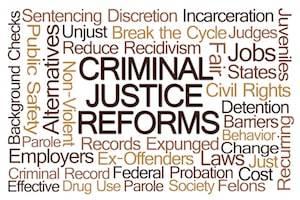Will the Upcoming Election Result in Prison Reform or More of the Same?
 By Ray Dall’Osto
By Ray Dall’Osto
After laboring in the criminal justice field in Wisconsin for forty years, what have I learned? First, that the state and federal prison populations have grown from 250,000 to 1,500,000 in that time period, yet overall, crime rates are substantially down. Of the 186,000 federal prison inmates in 2010, 98,000 were in prison for drug offenses. When I first started to practice, there were less than 4,000 prison inmates in Wisconsin, and now that number is consistently over 20,000. While crime rates have gone down, the United States remains the world leader in rates of incarceration. What is wrong with this picture? How have we as a society ended up here? What can be done?
Harsh sentencing laws such as mandatory minimums, sharp increases in felony sentence structures, and judges handing down longer prison sentences, combined with the elimination of parole and early release programs for good behavior and successful treatment completion, has created this over-incarceration morass.
Imprisonment does not cure or deter crime but rather isolates a person from society and makes him or her non-productive and dependent on the system. It does not provide treatment or rehabilitation, nor does it give them a job or life skills so they can successfully reintegrate into society.
National Research Council (NRC) studies show that mass incarceration is ineffective at reducing certain types of crime, such as youth and drug crimes. Studies show that people tend to “age out” of criminal behavior, with the decline beginning in the mid-20s and dropping sharply for adults in their 30s and 40s. The NRC concludes that because recidivism rates decline markedly with age, lengthy prison sentences, unless they specifically target very high-rate or extremely dangerous offenders, are an inefficient approach to preventing crime by incapacitation.
The August primaries are over, and the candidates chosen should address the mass incarceration dilemma. The Democrat challengers to Governor Walker and their nominee who came out of the primary, Tony Evers, have voiced the view that Wisconsin’s current criminal justice and prison policy is ineffective and too expensive, both in the cost to taxpayers and the burden it puts on those caught up in the system. Governor Walker and Attorney General Schimel have sharply criticized their opponents’ call to cut the prison population in half by stating that such a policy would release hordes of violent criminals onto the streets. Who is correct?
The Bureau of Justice Statistics numbers for 2015 show that nationally, about 54% of persons incarcerated in state prisons are in for violent offenses, with the other 46% in for property crimes, drug crimes, and public order crimes. These statistics don’t tell it all, at least for Wisconsin. Many people currently in prison are there for violations of probation or extended supervision, including a large number whose revocation is not based on a new criminal conviction but on rule violations. Probation sentences and alternatives to revocation are not utilized enough.
The need is great for prison reform to address expensive mass incarceration, and it is recognized by elected officials of both parties. In February 2018, the Senate Judiciary Committee backed the Sentencing Reform and Corrections Act, which reduces some of the strictest federal sentencing rules with modest reforms for the federal prison system. The House passed the FIRST STEP Act, Congress’ prison reform bill, in May. The groundwork is set for long-awaited legislation to pass to begin to address the problem.
What is needed leading up to the November elections is for the candidates to outline real and effective solutions to this critical problem. Simple slogans advocating a large percentage reduction without more detail, and on the flip-side, skewing the statistics and vowing to never visit a prison, do not address this sufficiently and are a disservice to the electorate. In 2008, the estimated annual cost to house an inmate in prison in Wisconsin was $31,806. That is near $40,000 now. We aren’t getting the bang for the bucks spent. A person held in prison is non-productive, and taxpayers entirely support them, which adds to the state budget deficit. A person on probation, whether with or without work release, pays the cost of his or her incarceration and supervision, remains productive and actively employed, and supports his or her family. What makes more sense from an economic and a societal viewpoint? Ask the candidates about this issue and vote for common sense.
Ray Dall’Osto is a former public defender and currently practices criminal and white collar defense at the law firm of Gimbel, Reilly, Guerin & Brown, LLP.
Sources:
Sentencing Project, Criminal Justice Facts, https://www.sentencingproject.org/criminal-justice-facts/
https://www.bjs.gov/content/pub/pdf/p16.pdf







